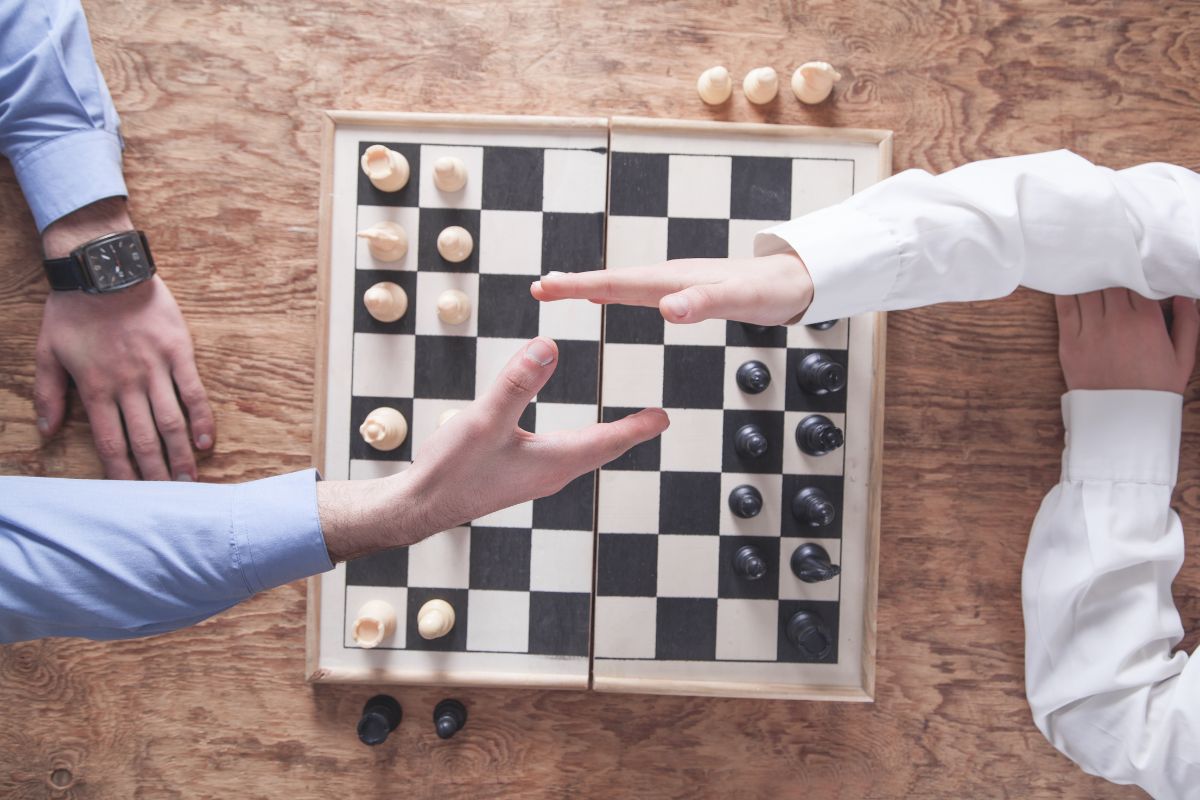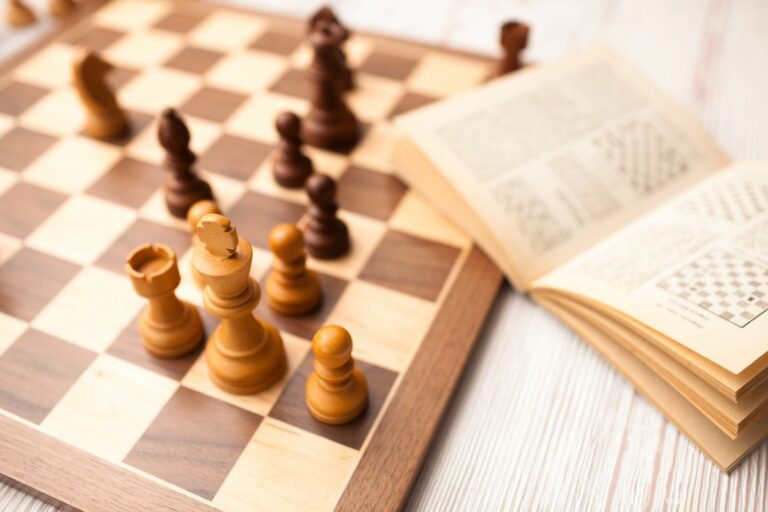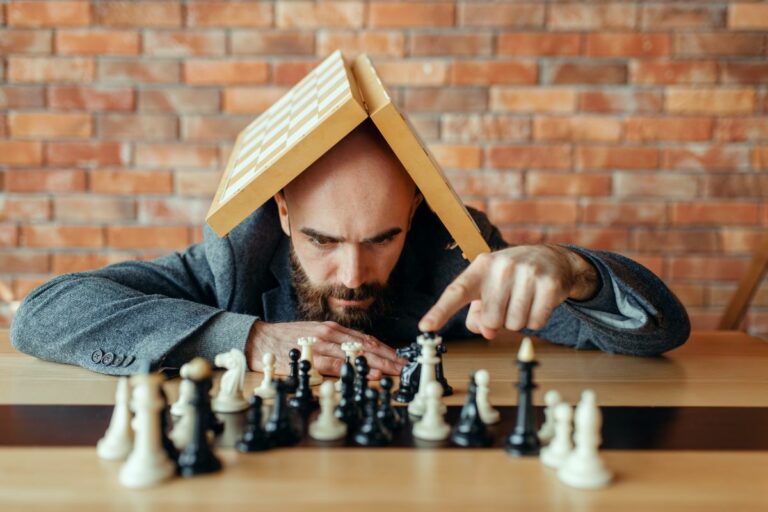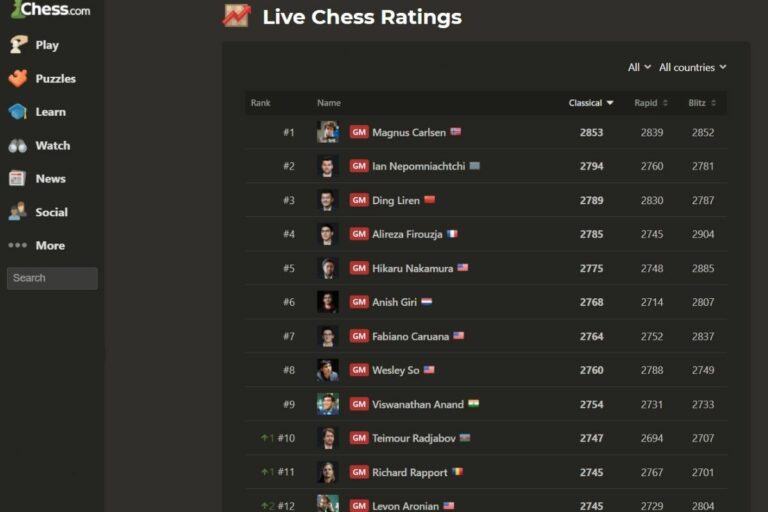Why Do You Keep Drawing in Chess? 5 Reasons and Solutions
In chess, it can be frustrating when both sides reach a standstill, leaving no clear winner. While drawing is a common outcome in chess, consistently settling for draws is not normal.
In order to fix this problem, you first need to understand the reasons behind frequent draws in chess. So, why do you keep drawing in chess?
Several factors contribute to frequent draws in chess, such as avoiding risks, competing against equally skilled opponents, overlooking winning chances, struggling to convert advantageous positions, and insufficient knowledge and proficiency in playing strong endgames.
Keep reading to learn more about the reasons why you keep drawing in chess and what you can do to win instead.
What Is A Draw in Chess?

In chess, a draw occurs when the game ends in a tie rather than a victory for either player.
One common scenario leading to a draw is a stalemate, which occurs when the player whose turn it is to move has no legal moves available, but their king is not in check.
Another way a draw can arise is through a perpetual check, which occurs when the position of the kings and other pieces creates a continuous loop of checks. This is known as a draw by repetition.
Insufficient material is another situation that can lead to a draw. If both players have insufficient pieces to deliver checkmates, such as a lone king against a lone king or a king and a bishop against a lone king, the game ends in a draw. This rule prevents unnecessary prolongation of the game when there is no realistic possibility of a checkmate.
Agreed draws can also happen in chess, as players may reach a point where they feel the position is deadlocked or that the outcome is likely to be a draw based on the material and position on the board.
Is It Bad to Draw in Chess?
Drawing in chess is not inherently bad, as it is a legitimate and common outcome in the game. However, if a player consistently settles for draws without actively seeking victory, it may indicate a problem.
Additionally, in competitive settings, consistently drawing may prevent a player from climbing the ranks or achieving their desired results. That’s why it’s important to strike a balance between embracing the draw when appropriate and actively pursuing wins is crucial for growth and success in chess.
Why Do You Keep Drawing in Chess? How to Get a Win Instead?
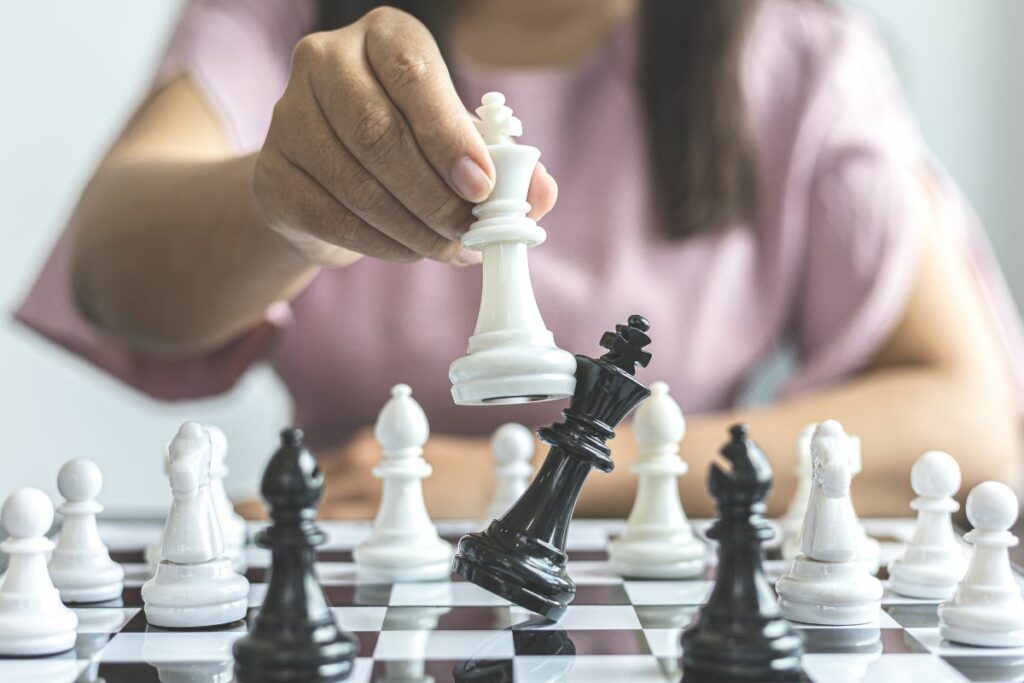
There are several reasons why players may find themselves frequently drawing in chess. So, let’s break down each one of those reasons and provide solutions to help you win more chess games instead.
Reason 1: Avoiding Unnecessary Risks
There are various factors that might contribute to your reluctance to take risks in chess. Consider the following possibilities:
- Fear of making errors and jeopardizing the game outcome.
- Lack of confidence in visualizing the board and accurately calculating moves and their consequences.
- An overly defensive approach, prioritizing the protection of your position rather than seeking attacking opportunities.
- Excessive caution, focusing on avoiding potential pitfalls rather than strategically calculated risks to secure a win.
Solution: Enhance Calculation and Visualization Skills
To overcome this tendency and cultivate a more risk-taking mindset in chess, there are a few steps you can take:
- Improve your calculation abilities by regularly working on tactics puzzles and analyzing your game moves.
- Embrace a more assertive approach, being willing to take calculated risks even if it entails the possibility of making mistakes.
- Maintain a balance between caution and aggression, recognizing that both extremes can be detrimental.
- Gradually enhance visualization skills by starting with simpler scenarios and progressively adding more pieces to visualize complex positions mentally.
Remember, chess is a game that requires a delicate balance of caution and calculated risk-taking. By developing your calculation and visualization abilities, you can boost your confidence and increase your chances of success on the chessboard.
Reason 2: Restricting Competition to Players of Similar Skill Level
There may be various reasons why you find yourself primarily playing against chess players at your own level:
- Being content with consistently achieving positive results in your games, leading to a preference for opponents at a similar or lower skill level.
- Limited exposure to opportunities for playing against stronger players, possibly due to a lack of available resources or limited access to a diverse player pool.
- Reluctance to actively seek out stronger opponents, driven by a lack of confidence in competing against them and fear of losing.
Solution: Embrace the Challenge of Stronger Opponents, Online or Offline
To enhance your chess skills and progress as a player, it is crucial to challenge yourself by engaging with opponents who possess greater strength.
Consider the following steps:
- Embrace online platforms that allow you to control the rating range of your opponents, ensuring that you are paired with players of higher ratings. Chess websites like Chess24 offer such features. You can check out our comparison of the best online chess platforms here.
- If fear of embarrassment is a concern, consider playing offline against real opponents. For example, joining a chess club or local community provides an environment where you can find players of various skill levels and foster social connections. Facing your fears is the first step towards resolving them.
- Participate in chess tournaments that offer opportunities to face a diverse range of opponents, including stronger players. Such events expose you to different playing styles and enable growth.
By actively seeking challenges against stronger opponents, both online and offline, you can expand your horizons, learn from your mistakes, and improve as a chess player.
Reason 3: Overlooking Opportunities
There are various reasons why you may be inadvertently missing your opponent’s blunders in chess. These include insufficient attention to the board, excessive preoccupation with your own plans, inadequate depth of analysis, or playing too hastily.
Solution: Heighten Focus and Slow Down
To enhance your ability to identify your opponent’s blunders, consider implementing the following strategies:
- Direct more attention to the chessboard, ensuring you are fully engaged in observing the position.
- Deepen your analysis of the position, probing for tactical opportunities and potential weaknesses in your opponent’s moves.
- Take your time when making decisions, allowing yourself a sufficient opportunity to evaluate candidate moves and thoroughly assess the consequences.
- Practice spotting blunders in your own games, which can heighten your awareness of potential mistakes made by your opponent.
By adopting these approaches, you can cultivate a sharper ability to recognize and capitalize on your opponent’s errors, leading to improved performance in your chess games.
Reason 4: Overlooking Stalemate Patterns
Although stalemates are not inherently negative, they represent an undesirable outcome when victory could have been achieved instead.
Several factors might contribute to your oversight of stalemates in chess games. Consider the following possibilities:
- Insufficient attention given to the potential movements of your opponent’s king, resulting in a failure to recognize when the position is leading to a stalemate.
- Limited awareness of the rules governing stalemates and how they can manifest in chess.
Solution: Deepen Stalemate Knowledge and Maintain King Maneuverability
To enhance your ability to identify stalemates in chess games, implement the following strategies:
- Increase your attention to the chessboard and actively consider the possible paths your opponent’s king can take, ensuring you remain vigilant for potential stalemate situations.
- Familiarize yourself with the rules and mechanisms of stalemates, cultivating a comprehensive understanding of how they can arise during gameplay.
- Conduct a deeper analysis of the position, exploring the consequences of your opponent’s moves and actively assessing whether a stalemate may be approaching.
- Allow yourself ample time to make decisions, avoiding hasty moves that might overlook potential stalemate possibilities. Clear thinking and careful consideration can aid in spotting and avoiding such situations.
- Study tactics and actively practice recognizing stalemate patterns in your own games, which will sharpen your ability to identify positions that may lead to a stalemate.
By implementing these approaches, you can strengthen your awareness of stalemate possibilities, maximizing your chances of achieving favorable outcomes in your chess games.
Reason 5: Struggling with Chess Endgames

The endgame is the least liked stage in a game of chess as it can be too technical and most of the time you won’t even know why you may be losing.
There are various reasons why you might encounter difficulties in chess endgames. Consider the following possibilities:
- Insufficient investment of time in studying endgames, resulting in limited familiarity with endgame patterns and insufficient practice of basic endgames.
- Inadequate understanding of endgame principles and their application in specific positions.
- Discomfort with the techniques and strategies required to navigate endgames successfully.
- Mistakes in the endgame arise from poor endgame knowledge, weak calculation abilities, visualization challenges, or a lack of focus.
- Failure to recognize crucial details in the endgame, such as the positioning of pieces, the placement of your opponent’s pieces, and the pawn structure on the board.
Solution: Devote Time to Studying and Practicing Endgames
To enhance your endgame skills, consider implementing the following strategies:
- Engage in a comprehensive study of endgame principles, familiarizing yourself with key concepts and techniques.
- Practice solving endgame puzzles to reinforce your understanding and improve your ability to make optimal decisions in different endgame scenarios.
- Analyze your own endgames to identify errors and areas for improvement, enabling targeted practice and skill refinement.
- Develop a keen awareness of the positioning of your pieces, your opponent’s pieces, and the pawn structure in endgame situations, as these factors greatly impact the outcome.
- Incorporate endgame practice into your regular games, actively applying the techniques and strategies necessary to navigate endgame positions successfully.
By dedicating time and effort to studying and practicing endgames, you can strengthen your proficiency in this critical phase of the game and increase your chances of achieving favorable results.
Conclusion
In conclusion, the prevalence of draws in chess games can be attributed to various factors, including a reluctance to take risks, limited exposure to stronger opponents, missed opportunities, inadequate endgame skills, and other underlying issues.
However, the good news is that there are actionable steps players can take to break free from the cycle of draws and start winning their chess games.
If you did find this article helpful, please consider sharing, as it can help this little site grow 🙏

